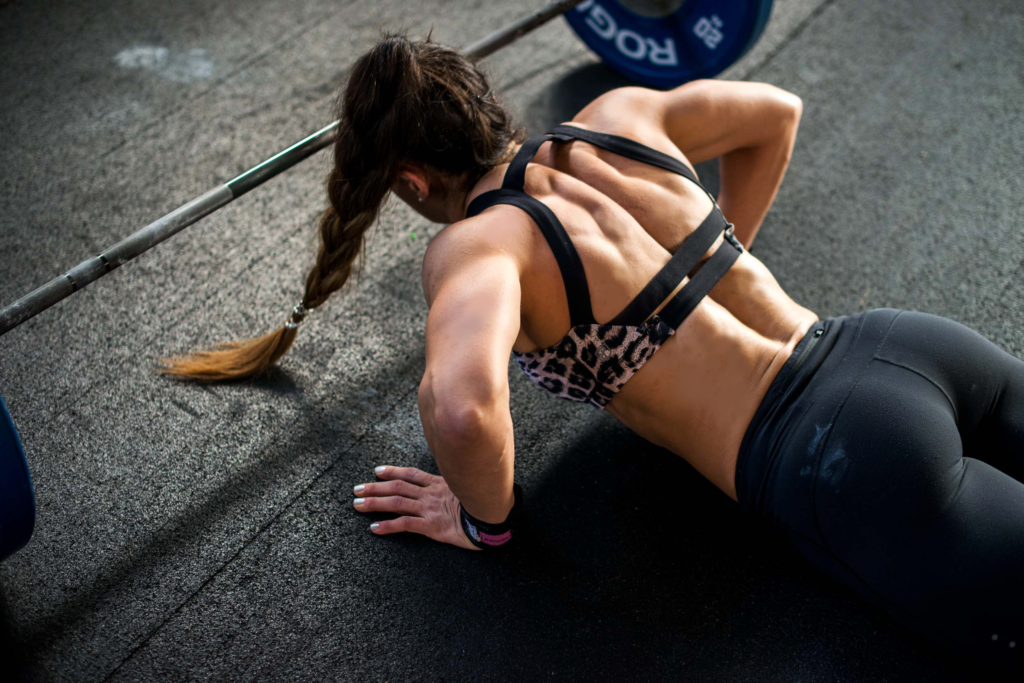
With the Open period just concluded, and everyone waiting for the announcement of the qualifying spots for the Games through the Top 20 & National Champion finishers, it is time for the debriefing. Below follow some notes and inferences regarding this season’s Open procedure, and the course we should expect it to have in the future.
New entries & formats
One of the most greater remarks is the constant input of new movements in the variety of the standard Open exercises. Last year we came across the Strict Hand Stand Push-up, this year there was the Single-leg Squat. Based on that, we shouldn’t be surprised if we would see even more demanding exercises such as Rope Climbs or an ergometer; Bike-erg, added to the “repertoire” of CrossFit in the years to come. Although all of these exercises are familiar to the majority of athletes, they would had definitely not be included in this training phase of the season. Consequently we understand that, the preparation of the athletes whose goal is the Open, is gradually developing into a more complicated and complete procedure, something we should expect since the Open came to be a direct path to the CrossFit Games.
Another significant remark is the addition of new workout formats. The 20.2 & 20.5 qualifiers really stood up with the distinction they had over workouts of previous years. More precisely, the 20.2
Amrap 20min of:
4 dumbbell thrusters 50lb/35lb
6 Toes to Bar
24 double unders
was the first workout where the athletes had to work non-stop for 20 minutes with not a chance to rest if they wanted to achieve a solid performance. First time we have seen so many transitions with top performance athletes, reaching over 90 in number.
On the other hand the 20.5
For Time
40 Ring Muscle-Ups
80 calorie Row
120 Wall Ball Shots (20/14 lb)
Partition any way
Time Cap: 20 minutes
was a workout that would allow you to “tailor” the format to you, and create the strategy that will lead you to the finish as fast and efficiently as possible.
You had to come up with a plan to partition the exercises anyway you wanted in order to benefit, so the more self-aware you were the better and more beneficial partition you would make. Double task! Cool, isn’t it? So one thing that came to our attention is that, the key factor of perfectly adjusting the workout was a redo, and for those that did a redo, there were some major changes indicating a generic overestimation of capacity. The CrossFit Open introduce even more strategy in the game!
Time over Task dominance
Another really interesting fact is that, similarily to last season’s Open, 4 out of 5 workout formats were “For time” and only 1 was “AMRAP”. So while the time cap refered to long workouts, and they were for the majority of participants that hit or reached near the cap (2 workout of 20 min, 15 min, 9 min), for top performance athletes there was only 1 workout that forced them to work for 20 minutes, the “AMRAP”, in every other qualifier the work duration was significantly shorter than the time-cap.
Going over the results of the winners of the 2020 Leaderboard we find that the total work duration (minutes) was:
Men:
20.1 – 8:38
20.2 – 20:00
20.3 – 6:29
20.4 – 16:29
20.5 – 10:09
Women:
20.1 – 8:11
20.2 – 20:00
20.3 – 6:16
20.4 – 11:11
20.5 – 11:35
What we have here is valuable data for organising and goal setting the next Open preparation!
Heavy workouts
The two heavy workouts in a row was another fact that we could not ignore. In the 20.3 we came across the heavy deadlift
For time:
21 deadlifts (weight 1)
21 handstand push-ups
15 deadlifts (weight 1)
15 handstand push-ups
9 deadlifts (weight 1)
9 handstand push-ups
21 deadlifts (weight 2)
50-ft. handstand walk
15 deadlifts (weight 2)
50-ft. handstand walk
9 deadlifts (weight 2)
50-ft. handstand walk
Men: deadlift 225 lb. then 315 lb.
Female: deadlift 155 lb. then 205 lb.
Time cap: 9 minutes
and in 20.4 the heavy clean & jerk
For time:
30 box jumps
15 clean and jerks, 65/95lb.
30 box jumps
15 clean and jerks, 85/135lb.
30 box jumps
10 clean and jerks, 115/185lb.
30 single-leg squats
10 clean and jerks, 145/225lb.
30 single-leg squats
5 clean and jerks, 175/275lb.
30 single-leg squats
5 clean and jerks, 205/315lb.
Women 20-in. box Men 24-in. box
Time cap: 20 minutes
In both of these workouts what distinguishes the good from the best, is the ability to cope and manage with the “heavy element”, the phase of the workout that the barbell gets heavy and demanding. So what we noticed is that, given that you have a Max load higher than this of the workout, the major factor is in what condition you reach this heavy load. We concluded that, the advantage is not always with the stronger athlete but most probably with the one that copes well with the high volume of below-max loads (80-95% of max load), and at a high heart rate (75-90% of max heart rate).
Cut line
In response to the first paragraph where we comment the Open procedure and expectations, come the results concerning the scores. Its clearly noticeable that the margin of error is gradually lessened year-by-year. When back in 2019 you could have gathered 469 points (men) / 707 points (women) and still had a chance to qualify, in this year’s Open if you would sum over 337 points (men) / 395 points (women) it would cost you the qualification. This is proof that the level of athletes that aim at the qualification through the Open has been forced to increase amazingly, without qestion the top competitors performed well in all 5 qualifiers without a single error. We expect this tendency to increase in the future making it even harder for athletes to meet the standards of quallfication.
Judging system
Last but not least is the judging system. We all agree that the qualification through the Open should become more credible and transparent. CrossFit seems to be leaning in this direction, yet the gaps that remain are obvious. We noticed that from the first week, and each next week, the videos of the top scores worldwide were checked and modified, changing the current rankings. This is without question positive, but is it just? There should be a serious discussion under which circumstances a workout would get a major or a minor penalty and what the punishment will be. For example, when an athlete in 20.1 lacks extension on the snatch has an advantage, but by no chance should he/she be given a major penalty, that will modify their score from 8’30” to 11’00” (2’30” was the major penalty in 20.1).
The issue is not only within the world wide rankings, where someone could easily drop from 40 overall to 1000+ points, whatever this ranking might be due to a major penalty, but also in the National Champion Leaderboard where he could easily lose the top spot. The reason for that is more complicated and depends on the dissimilar ranking system and video submission policy (2 out of 5 get to be checked).
The system should be criticized and forced, in a way, to become better, but still each athlete or athlete’s team is responsible for understanding and complying with the standards applied by CrossFit. We shouldn’t forget that this is a game and every game has rules.









